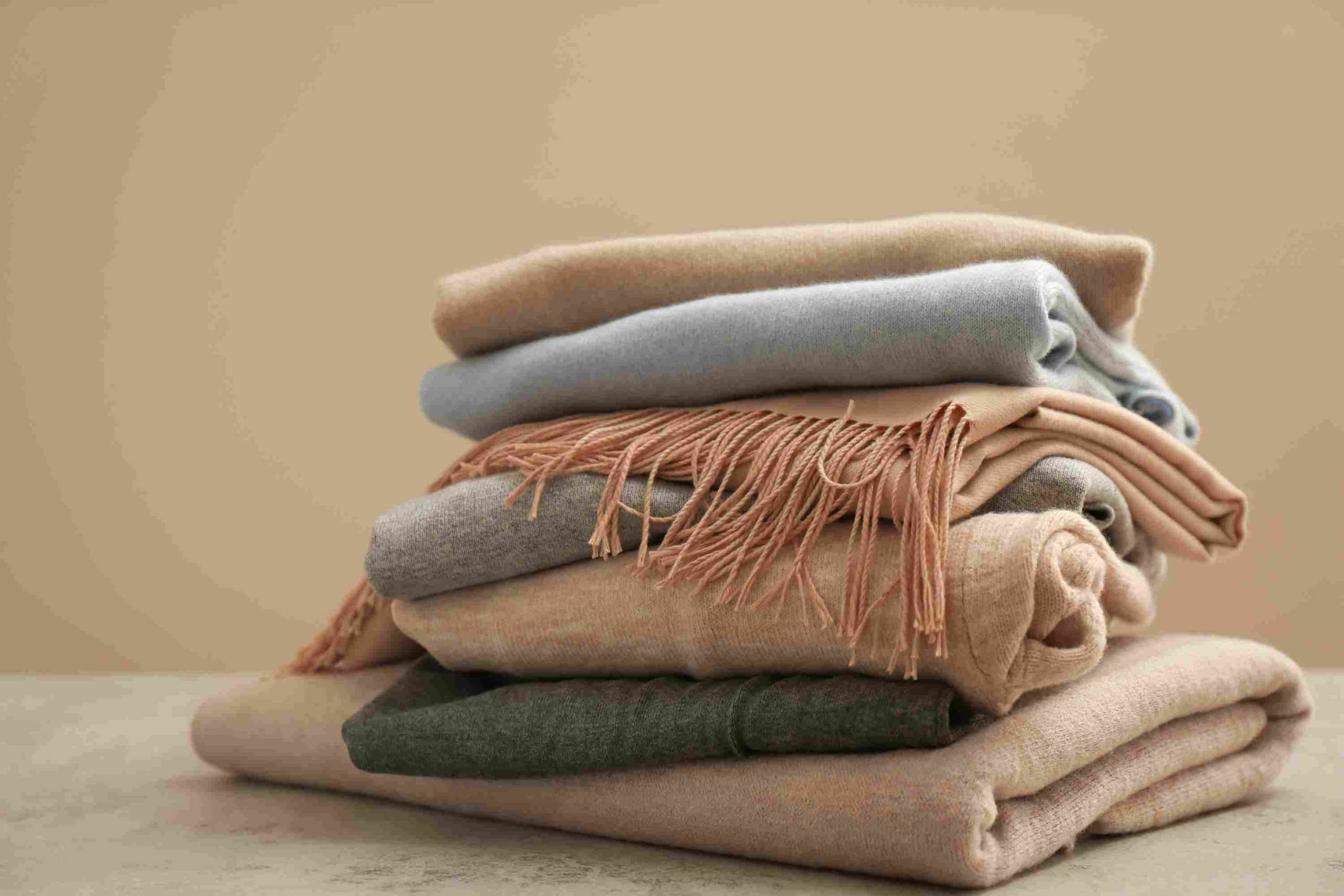Everything You Need To Know About Stocking and Hosiery Manufacturing


Introduction
The hosiery sector has been a key contributor to the Indian clothing industry. There is a huge demand in the West for lingerie, stockings, and hosiery manufactured in India. So if one manufactures lingerie, they should feel good that they are contributing successfully to the GDP (Gross Domestic Product) of our country.
The hosiery manufacturing industry is extremely fragmented due to the presence of multiple big brands and many smaller brands. Some of the most popular international hosiery brands are Puma, Van Heusen, Nike, Jockey, Adidas, Reebok, Zivame, Hanes, GenX, Tommy Hilfiger, Chromozome, Levis, Calvin Klein, United Colors of Benetton. Emporio Armani, Mark, and Spencer, US Polo, FCUK, Playboy, etc. If you go to a local retail store, you will find the presence of many small local brands and they have their own fixed customer base. Indian brands like Dollar Big boss, Park Avenue, VIP, DD, Rupa, Lux Cozi, Amul Macho, etc., occupy the majority of the market share.
There are multiple bra and camisole manufacturers for women who do not have any brand recognition even in India; however, women buy them on a regular basis.
Socks have huge acceptability in the Indian market, and the manufacturing of socks happens in every nook and corner of the country. Apart from that, some of the most popular hosiery products are vests, briefs, T-shirts, pajamas, shorts (male and female both), bathrobes, stockings, dressing gowns, panties, pantyhose, leggings, jeggings, capris/bermuda pants, etc. So if someone is planning to manufacture lingerie, they first need to identify the product lines they want to invest in.
Rise of stocking manufacturing business across the globe
In the 17th century, women wore hand-knitted wool stockings for practical purposes in European countries. It kept the women warm in the bone-chilling cold. However, with the advent of technology and modern heating systems, that need vanished to quite an extent.
Cuban heel seamed stockings that women wear underneath their evening gowns became popular in the last few centuries. Women took to wearing practical pantyhose under their skirts and dresses to their workplaces. From hand-knitted versions of stockings, the industrial revolution brought about multiple machines to knit fine quality sheer stockings.
Seamed stockings disappeared in the 1950s, and the world of fashion came up with short skirts for women in the 1960s. Women have been experimenting with various types and styles of stockings ever since. Various types of knitted patterns came up in the stocking fashion industry like fish-net, sheet stockings, polka dots, vertical lines, horizontal lines, various knitted patterns, etc.
Today, women have embraced a mixture of practical stockings and various patterns for wearing along with their party wear.
Birth and growth of circular machines in the stockings industry
Late in the 20th century, various types of automatic and semi-automatic knitting machines were invented to reduce manual labor. With the improvement of technology, today there are smart, computer-controlled machines to manufacture lingerie.
To produce larger and more complex knitted items, domestic and industrial machines, with either flat or circular beds, were invented. This was the turning point in the technology of manufacturing stockings.
Lycra as a material turned out to be the biggest boon to the stocking manufacturing industry. This material is used in many types of items in the hosiery industry like leggings, vests, etc. The material is extremely elastic and gives a proper shape to the leg by clinging to it.
The complete process of stockings and hosiery manufacturing
Once sewn, these stockings go through a process called ''boarding." Each stocking is hard-pressed over a flat metal leg form and 'set' with steam. This procedure eliminates the creases, and the knit is tightened. This is a time-consuming process.
Manufacturing seamed stockings takes longer than machine manufactured lycra stockings. Since the material is sheer, there is often wear and tear during the process. One-third of the manufactured stockings are discarded during the quality control process. Hence the wastage is very high in the process of manufacturing stockings and hosiery items.
The growth of flat-bed knitting machines
It is not an easy task to manufacture lingerie of superior quality. The first motor-driven jacquard flat-bed machine used in 1926 changed a lot of dynamics in the hosiery industry. Historically, flat-bed machines were used to produce trims. The fully fashioned machines had better speed and could churn more fabric than flat-bed machines. The fully fashioned machines used circular weft knitting technology.
However, the first motor-driven jacquard flat-bed machine provided knitwear designers with patterning capabilities. These capabilities were not present in the older flat-bed machines, and they became extremely popular in the world of lingerie and hosiery manufacturing.
The flat-bed or circular-bed machines are manufactured as single-bed machines to produce plain structures. Double-bed machines are meant for producing rib (column of knit stitch) and purl (a type of stitch) structures. It is very simple to convert a double-bed flat knitting machine to a single jersey knitting machine. All you need to do is separate one bed and its cam carriage. Hence the manufacturers design almost all commercial flat-bed machines having two beds.
In the last few decades, this flat-bed knitting machine has transformed a lot. From a mechanical mechanism, it has transformed into a highly sophisticated computer-controlled machine.
V-bed machines
V-bed machines have two rib-gated, needle beds. They are diagonally approaching needle beds set at 90 and 105 degrees to each other. The inverted V-shape appearance justifies the name of the knitwear machine. These machines are used to knit some specialty items using double hooked latch needles. Hence, they are very important to manufacture lingerie.
Power V-bed flat machines are primarily used to produce of knitwear for men, women, and children. They are available in simple mechanical jacquard machines that help in knitting simple patterned stockings. Fully electronic and computerized flat machines help in knitting complicated patterns and digital prints. If the need be, the V-bed machines can be designed with presser foot too.
Because of these advancements, high-quality hosiery garments are now produced at competitive prices, and everyone can afford to buy them.
From the homespun chemises to various kinds of sophisticated underwired bras and various patterns like backless, strapless, multiple back patterns, has been a long journey in the development of undergarments for women. From the 15th to 21st century, there have been multiple changes in the choice of fabric and the technology of manufacturing this lingerie.
The introduction of the presser foot
The presser foot was developed in the late 1960s. In 1975, presser-foot was introduced to commercial machinery at ITMA (International Textile Machinery Association). This machine made it much easier to manufacture lingerie.
First flat-bed machine with electro/mechanical selection
In the early 1970s, the first flat-bed machine with electro/mechanical selection was developed. This made jacquard patterning a cakewalk for the specialists handling this machine. Stoll introduced the first fully electronic flat-bed machine in 1975. This too gave a boost to manufacturing lingerie. In the 1970s and 1980s, the fashion knitwear industry was in a booming phase.
In the 1990s, there were many breakthrough technologies introduced in the field of shaping knitwear. Traditional British knitwear brands linked with prominent designers, and the flat-bed knitting technology flourished further. Traditional knitting techniques slowly started fading away.
The first generation of complete garment machines
The first generation of complete garment machines was introduced in 1995. Knitwear has evolved as a full-fledged part of the fashion industry, and consumers have become aware of the benefits of wearing hosiery products. Fashion author Sue Jenkyn Jones recognized the importance of knitwear in fashion, especially in the new sports and active wear collections.
The rise and growth of the stocking and hosiery manufacturing industry
The above paragraphs were dedicated to the rise and growth of the sticking and hosiery manufacturing industry. The various technologies and introduction to various machines to ease the work of the hosiery garments manufacturers were discussed in detail.
Today, if someone wants to start a hosiery manufacturing unit, they need to look for a factory space first. Along with hiring the right resources, they need to register their company. Since there will be 100s of workers working in the factory, the company needs to ensure that they follow all the labor laws and follow ethical environmental practices.
The hosiery manufacturer needs to partner with good sourcing companies to ensure that they have a regular supply of various kinds of fabrics that are required to manufacture lingerie. They need to liaison with good warehouses to store their products and have good logistics partners who will take their products to the company retail stores and other regular retail stores.
They need to create an online portal and manage a complete customer service team to ensure that the online customers receive complete service and all their queries and complaints are resolved fast.
Above all, the company needs to hire designers and merchandisers to ensure that regularly new designs and patterns are released in the market. The advertising and social media team will take care of the promotions and sales campaigns. The social media team will be the ears for the customers on the social media platforms. They can pass on the collective customer feedback to the blackened teams to ensure that the major flaws in the products can be reduced. Based on the customer feedback, they can even suggest trends that the customers are looking forward to.
Hence, setting up a hosiery manufacturing unit is quite a humongous task and running it successfully and ensuring that the company is making profits is even tougher. So, anyone who is planning to start a hosiery manufacturing unit should weigh the pros and cons properly before taking the step.
Conclusion
Every fashion brand must source its fabric from the most trustworthy and reliable vendor. Fashinza is the right platform that can connect you with reliable vendors and manufacturers to meet your fabric needs. So, if you want to take your hosiery manufacturing business to the next level, partner with Fashinza. You will see the magic unfurling. Happy designing!



















